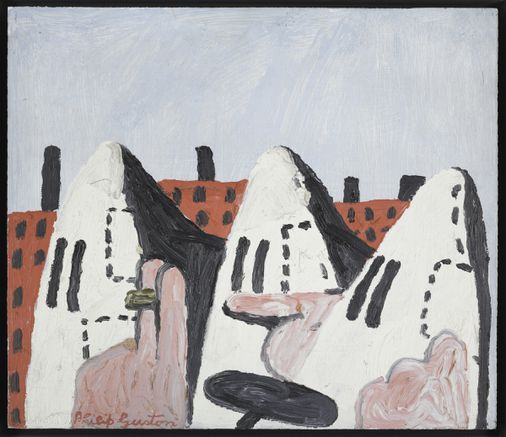The four museums that organized the exhibit, called Philip Guston Now, include the National Gallery of Art in Washington, the Museum of Fine Arts, Houston, the Tate Modern in London, and the Museum of Fine Arts, Boston. In a joint statement released quietly Monday, the museum directors said that they were postponing the exhibition until a time at which we think that the powerful message of social and racial justice that is at the center of Philip Gustons work can be more clearly interpreted.
The exhibition which was advertised as a selection of roughly 125 paintings and 70 drawings was supposed to begin its international tour this past summer, but the coronavirus pandemic resulted in its postponement until next year. Now, the tour wont begin until 2024.
In the statement, the museum directors said that they recognized that the world is very different from what it was five years ago, when they started the project.
We feel it is necessary to reframe our programming and, in this case, step back, and bring in additional perspectives and voices to shape how we present Gustons work to our public, the directors said in the statement. That process will take time.
The exhibition had previously been described as including Gustons small panel paintings from 1968 through 1972, a time period in which he was developing his new vocabulary of hoods, books, bricks, and shoes. Some of the figures in Gustons works included cartoonish white-hooded figures smoking cigars, riding in a car, or, in one of Gustons most well-known works, painting a self portrait at an easel.
Gustons daughter, Musa Mayer, who wrote a memoir of her father, said in a statement that she was deeply saddened by the decision from the museums to postpone the exhibition, writing that her father had dared to unveil white culpability, our shared role in allowing the racist terror that he had witnessed since boyhood.
This should be a time of reckoning, of dialogue, she wrote. These paintings meet the moment we are in today. The danger is not in looking at Philip Gustons work, but in looking away.
She noted that her fathers family were Jewish immigrants who fled Ukraine to escape persecution and that he understood what hatred was.
Guston, who died in 1980, at 66, was a leading abstract expressionist until he made an artistic about-face during the Vietnam War, influenced by civil unrest and social dissent. Calling American abstract art a lie and a sham, he pivoted to making paintings of a dark, figurative style, including satirical drawings of Richard Nixon.
Darby English, a professor of art history at the University of Chicago and former adjunct curator at the Museum of Modern Art, called the decision by the museums to delay the Guston exhibition cowardly and patronizing, an insult to art and the public alike. He called the artists works counterintuitive and thoughtfully created in identification with historys victims.
It should be part of ones attitude to see them as opportunities to think, to improve thinking, to sharpen perception, to talk to one another, English said of the works in an email. Not to grimly proceed with ones head in the sand, avoiding difficult conversations because you think the timing is bad.
But art museums have in the past three years increasingly found themselves on the defensive for showing works that depict polarizing subjects and racial violence. Some observers have protested the showing of work considered traumatizing to communities scarred by that violence; others have objected that institutions put that pain on display gratuitously. Recently, some work has been removed from major exhibitions.
In 2017, the Whitney Museum of American Art faced a backlash for its display of the painting Open Casket, which depicted the mutilated body of Emmett Till, a Black teenager who was lynched by two white men in Mississippi in 1955; the key point of controversy was that the artist, Dana Schutz, is white.
That same year, in Minneapolis, the Walker Art Center, removed a work by white artist Sam Durant, called Scaffold, a gallows-like sculpture intended to memorialize several executions, including the hanging of 38 Dakota men in Minnesota after the United States-Dakota war in 1862, after local Native American communities objected to it.
Just this summer, the Museum of Contemporary Art Cleveland canceled an exhibition of artist Shaun Leonardos drawings of police killings of Black and Latino boys and men after several Black activists and some of the museums staff members objected to it. The artist called the move censorship; the museums director, Jill Snyder, later apologized to Leonardo for canceling the show, saying we breached his trust, and we failed ourselves.
Nearly two weeks later, she resigned.
This article originally appeared in The New York Times.read more
Philip Guston blockbuster show postponed by four museums, including Boston’s MFA


